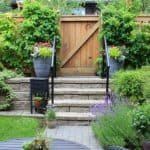Last updated on April 5th, 2022
Our site is reader supported, this means we may earn a small commission from Amazon and other affiliates when you buy through links on our site.
Raised beds make it easy to build a frame around your existing garden area, increasing the height and depth of the available planting space. With raised beds, you can take advantage of small or large spaces and increase what you are able to grow. They also make gardening easier because they are raised to a better working height for planting and general gardening tasks.
What are the benefits of raised beds?
With a raised bed, the first benefit is the additional space, in a location where you couldn’t previously plant directly in the ground, for example, on a patio area or on your decking.
They are also perfect if you want to choose different working heights and raise your growing areas to above ground level. This is perfect for anyone who struggles to bend down or work on their knees at floor level.
They are also beneficial for those who want a fully functional fruit, vegetable, and/or herb garden but have limited space.
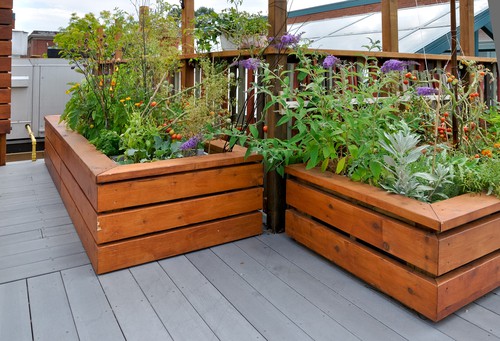
What kind of wood is best for raised beds?
If you plan to use raised beds, the best option is to make the beds yourself, because then they can be the exact size and shape your space affords. You will likely find pine wood as the main choice at any regular DIY stores, however, if you are able to get to a salvage yard, you can access more options.
You can also recycle any wood you have lying around, if you are lucky enough to have spare wood that’s up to the job.
Alternatively, you can order raised beds, but the larger the bed, the higher the cost. When you install your raised beds, be advised that you will need to dig out about 10cm around the area in question, put the wooden frame in the ditch, and then add the soil until the frame is secured in place. This means that the wood also needs to be treated so it doesn’t rot.
What vegetables can be grown in raised beds?
You can grow any vegetable in a raised bed that you have built in your garden. The key here is to understand that your raised bed is not a pot or a container. It is just a way to add more height to the garden space you already have.
In effect, you build a frame, then put the frame over the soil you have, and then fill the frame with more soil, mulch, compost, and anything else you want to mix into your soil. You can control the extra grow space by controlling the height of the frame, and therefore the amount of extra space you backfill.
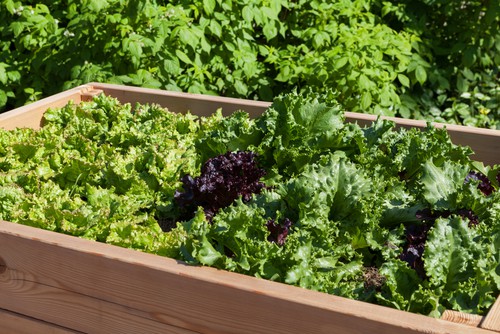
If you build a frame that is 30cm, you have added 30cm to your garden space, and given any vegetables, you grow extra space for their roots to grow downwards rather than sideways. With more space directly downwards, the plants won’t compete as much, and they will be able to share the water, nutrients, and space more effectively.
Whatever vegetables you have previously grown or want to grow in your garden now, consider adding to the raised beds. For example, you can grow:
- Spring onions
- White onions
- Red onions
- Carrots
- Cabbage
- Garlic
- Celery
- Shallots
These can be grown all in one bed. In another raised bed you can grow your herbs, potatoes, rows of strawberries, and even rhubarb.
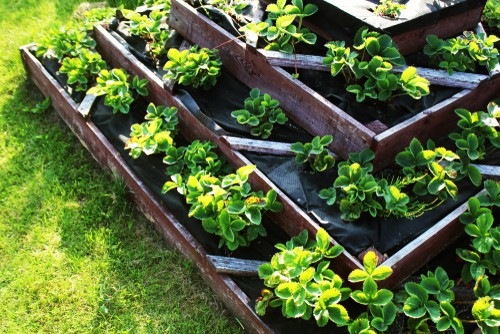
If your garden has an old, old bush or established tree right in the middle of an otherwise large unused space, you can leave it where it is and build the frame around it, add the extra soil/components and then plant all around the bush or tree.
If you want to grow things like cucumbers, peppers, or tomatoes, consider building a frame that can be fit against the raised bed so they can grow up it. You can make frames that go straight up, with an overhead structure or you can use the teepee or rectangular shape. Trellises are also suitable for vining plants.
What is the best soil mixture for raised beds?
With raised beds, the best mixture is really what you have for soil at the start (with some healthy compost, worm castings, or humus mixed in). If you have soil stripped of nutrients, now is the time to add those nutrients back in.
For example: if your garden is overrun with weeds or grasses, the soil likely has no nutritional value. You can get at-home test kits for your soil to determine what you need to add back into the soil.
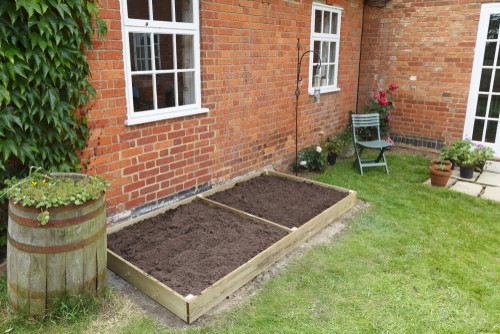
Things like compost, as mentioned, are great for improving soil conditions. If you have an empty raised bed that isn’t too deep we would recommend using a mixture of topsoil and manure or soil conditioner.
How to protect raised beds from animals
Depending on where you live, you may need to protect the items in your raised beds from animals like deers and rabbits. You should build the frame much more securely than you think it will need. You should also consider a fence around the perimeter or netting over things like strawberries.
How to protect raised beds in winter
When winter sets in, you want to protect the beds by covering them. You might consider covering the entire bed with a tarp once you have completed your final harvest and fleece will go a long way towards protecting against frost damage.
But this requirement is based on what you plan to grow. For example, carrots and onions still in the ground late in the season may require covering while kale can often withstand the winter, even if it is buried beneath the snow.
Overall, raised beds are a great way to increase the usable space in your garden. What’s more, they are relatively easy and inexpensive to make. Once you have the frames made, you won’t have to do them again for many years because they are reusable.


